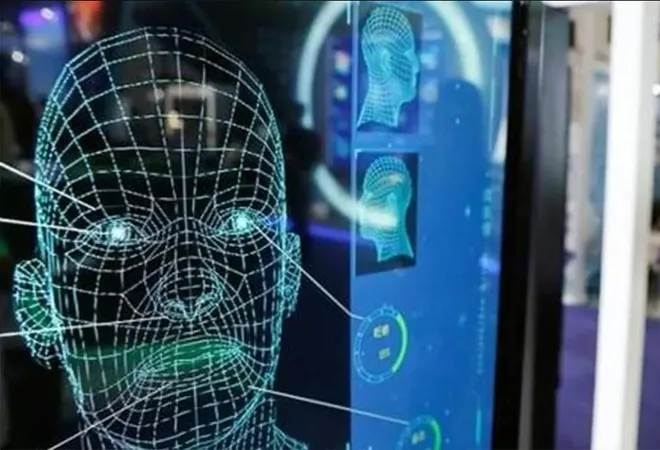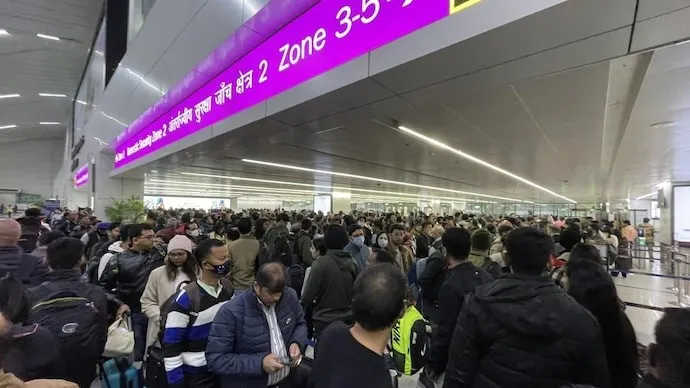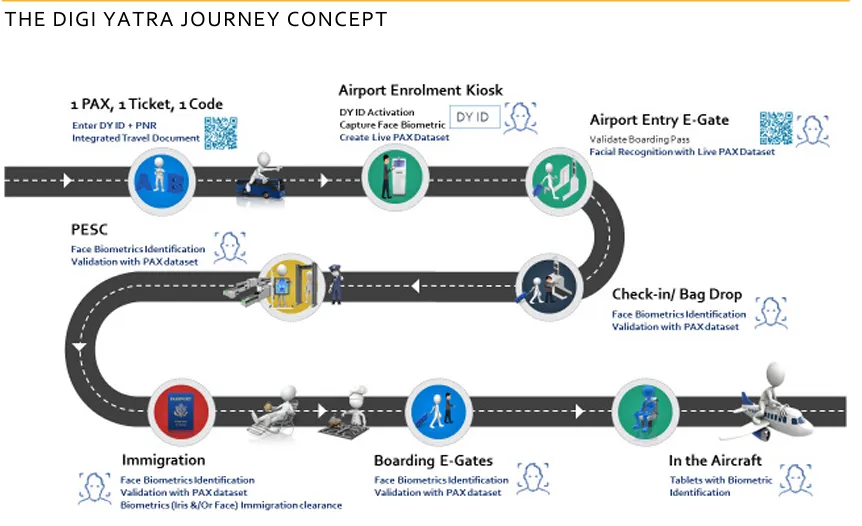
On 1 July 2019, Hyderabad’s Rajiv Gandhi International Airport began trials of a facial recognition system under the aegis of Digi Yatra (DY), a central scheme that promises “a seamless, paperless service experience at every touch point of their journey”. Bengaluru, Kolkata, Varanasi, Pune, and Vijayawada were meant to follow suit later in 2019, but after some delays, DY was eventually rolled out for domestic flights out of Delhi, Bengaluru, and Varanasi in December 2022.
India has emerged as the fastest-growing civil aviation market in the world and, by 2024, is expected to overtake the United Kingdom (UK) to become the third-largest air passenger market globally. In FY19, passenger traffic in India stood at nearly 345 million. While COVID-related restrictions resulted in a sharp decline in the years since, India is expected to return to pre-COVID passenger volumes in 2023. The increase in traffic has put a strain on India’s major airports. Mumbai and Delhi alone oversee about a third of all passenger traffic. The fact that airports are overburdened is evident in the serpentine queues and flight delays that often plague them, as seen at Terminal 3 of the Indira Gandhi International Airport in New Delhi in December.
 Image: Security check queues at T3, Delhi Airport (Source: India Today)
Image: Security check queues at T3, Delhi Airport (Source: India Today)
The platform’s allure for Indian flyers is indisputable: Instead of having to constantly produce your documents at various checkpoints and standing in interminable queues, one can register for a DY ID and glide through.
These logistical challenges form the rationale for technology-driven solutions: Services under DY seek to make airports future-ready, digitising manual processes, making passenger flow smooth and efficient, and removing bottlenecks caused by security checkpoints.
The Good, the Bad, and the Ugly
 Image: The concept for Digi Yatra, Digi Yatra Policy, 2018
Image: The concept for Digi Yatra, Digi Yatra Policy, 2018
The concept for DY is straightforward. Users can register for a DY ID using the Digi Yatra app, or at an enrolment kiosk at the airport. To generate the ID, users need to validate their credentials using Aadhaar<1> and upload a photograph of themselves. Users can then link the boarding pass of participating airlines with their DY ID. They can then enter the airport and clear security by passing through designated gates using facial recognition technology (FRT).
Similar processes in airports around the world have been met with criticisms centered on privacy; some have raised the point that opting out of biometric identification has been made convoluted by design; others have questioned its legality and still others have raised alarms regarding the misuse of facial recognition data by governments and private vendors.
The Ministry of Civil Aviation (MoCA) has made efforts to assuage concerns regarding the security of passengers’ biometric data. The Minister of Civil Aviation, Jyotiraditya Scindia, stated at the DY launch event that no personally identifiable information will be stored in any central repository, but locally on the user’s device. Any data shared with operators will be encrypted, and automatically purged within 24 hours of use. Furthermore, the existing DY policy states that registering for a DY ID is voluntary.
The major choke point for domestic flying is the security check, which DY will not solve in the long term, especially as early majority of passengers begin to enroll.
However, the continued absence of a data protection law, not to mention the documented loopholes in Aadhaar—against which DY authentication will occur—do not inspire confidence in the efficacy of the DY ID. Finally, as disgruntled reviews on the Digi Yatra app’s Play Store page make abundantly clear, the authentication process is far from seamless, with persistent glitches, errors in linking with DigiLocker (the document wallet which is part of IndiaStack), and issues matching DY credentials with boarding passes. Passengers still need to scan their boarding passes to enter, and users have already flagged issues with the FRT gates. Finally, the app does not currently have a privacy policy, just a note declaring it is “coming soon” when one tries to access the link.
The future of travel hangs in the air
For now, the primary appeal of DY is skipping long lines, less because of the system itself and more because early adopters are few, and awareness about the programme is limited. Indeed, one may question whether DY requires biometric identification at all. The major choke point for domestic flying is the security check, which DY will not solve in the long term, especially as early majority of passengers begin to enroll. If DY is implemented for international flights, we can add immigration as the second choke point, another issue on which this system in its current avatar would have little to no bearing.
DY comes with its own data security concerns, but airport infrastructure needed to support this system have to be robust as well, lest it falls victim to cyber attacks or other disruptions. MoCA should be cautious about over relying on technology, without adequate measures to improve on-ground personnel issues (especially shortages of security personnel, which results in only a fraction of security check gates being operational at a given time), queue management, and alternatives in case of tech failures.
<1> The Digi Yatra Foundation website states there are plans to integrate other government-issued IDs for validation in the future.
The views expressed above belong to the author(s). ORF research and analyses now available on Telegram! Click here to access our curated content — blogs, longforms and interviews.






 PREV
PREV


